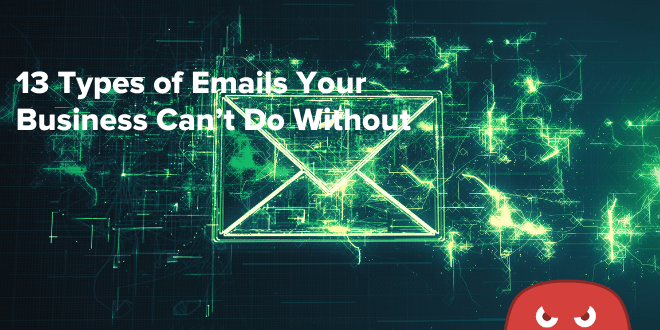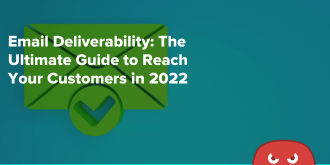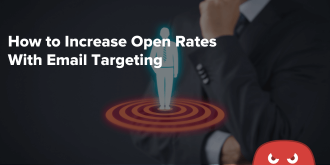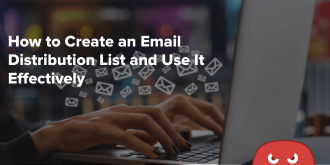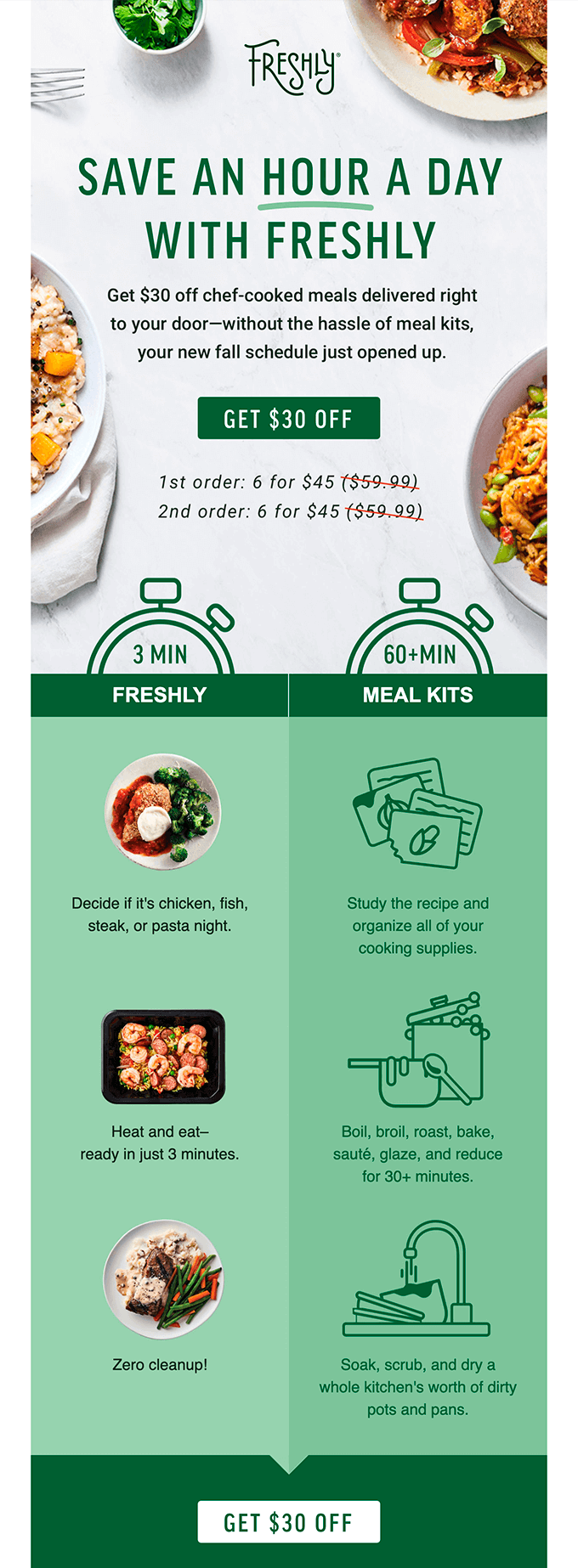Quick Links
“Oh no, not another email from X.”
You certainly don’t want your subscribers to react this way to your emails.
That’s why you need to introduce some variety to your email campaigns and deliver value even if your audience isn’t ready to purchase from you yet.
If you don’t wow them, you lose them. 80% of customers set high standards for companies — and expect them to deliver not just high-quality products or services but also extraordinary experiences.
Let’s discuss how you can educate, surprise, inform, and amuse your audience using various types of emails.
Why Do Businesses Need to Use Different Types of Emails?
You probably know that you need to use different content types to address various customer needs and keep them moving down the sales funnel.
The same is true for email campaigns. When you send diverse and valuable emails, it benefits both you and your audience.
Here’s how it works:
- Your recipients see various facets of your brand and get a chance to learn about your culture, mission, production, team, and so on.
- Showcase your expertise through sharing valuable content such as videos, infographics, webinars, and long-form articles in your emails.
- Boost customer loyalty by offering true value, not just promotional content.
- Keep your subscribers in the loop by sending them important notifications and updates.
- Nourish and educate new subscribers at a natural pace and give them time to develop a true interest in your offer.
- Distinguish yourself from the competition by engaging in a meaningful conversation with your target audience.
- Your subscribers are more likely to provide you with honest feedback when they see that you put real effort into your brand communications.
- Continually re-engage your passive subscribers and put them in a buying mood using a variety of helpful emails.
- Share customer endorsements and use social proof to finally close the sale.
It’s a win-win situation. When you create emotional bonds with your audience and show them that you’re not just here to profit off them and leave, they respond by paying more attention to your business.
10+ Types of Emails and How to Make Sense of Them
Now let’s dive into the most useful types of marketing emails — we’ll even share tips on how to incorporate them into your email strategy. For each type, we’ll show you relevant email marketing examples and discuss what makes them steal-worthy.
These types of emails aren’t niche-specific — an international SaaS company and a local clothing store can equally benefit from using them, as long as they tell their brand’s unique story.
#1. Welcome emails
Whenever you meet a new person, you usually greet them and get to know them before diving into a serious conversation. The same rule applies to your subscribers. Using welcome emails is the best way to make your new subscribers, customers, or community members feel at home.
The magic formula is simple:
- Introduce your brand.
- Explain what kind of information you’ll share with your subscribers.
- Emphasize the value of your offer and how it’ll help your audience shop/work/live better.
- Finish your email with a call to action.
This example from Adobe shows how it’s done.
In this welcome email, Adobe encourages its new subscribers to participate in and contribute to the Lightroom community. The email copy is very user-centric, and the CTA at the bottom is helpful rather than pushy.
There are no generic images, just real photos made by real Lightroom users. The whole email is easy to scan — the recipient won’t miss a single bit of information even if they read it on the go.
#2. Promotional emails
The way you promote your products or services also matters. A promotional email shouldn’t be too promotional — try to sprinkle in a bit of playfulness, debunk common myths, or include some expert tips to provide more value.
Fleur & Bee, for example, prefers to educate its customers before sending them to a product page.
This visual ingredient breakdown is extremely effective for two reasons. Firstly, it clearly shows what’s inside this particular product and why it’s better than any mass-market alternatives. Secondly, it captures user attention and inevitably makes them interested in this better-for-you cosmetic line.
There are multiple CTAs here, but they aren’t conflicting with each other, thanks to the visual contrast and white space. All in all, this is an effective yet minimalistic promotional email you can learn a lot from.
#3. Lead nurturing emails
When selling a complex product or service, you can’t expect your potential customers to just grab it and leave. You want to gradually educate them and help them purchase from you with confidence. If they understand how your product or service works, they’re more likely to use and enjoy it.
Lead nurturing emails help you achieve exactly that. You share useful content such as tutorials, reports, guides, infographics, and articles with your leads to help them ripen.
That’s the strategy supplement brand Ritual prefers.
This email introduces the Ritual multivitamin formula and describes its advantages from a scientific viewpoint. Two intuitive illustrations show exactly how all those complex particles work together.
The recipient of this email may not be ready to purchase pricey supplements just yet. But they’ll certainly digest this useful info, and it’ll help them eventually reach the conclusion that there’s no better alternative on the market.
#4. Transactional emails
This “least exciting” type of email can suddenly become quite engaging if you take the right approach. You don’t have to make your transactional emails look like long, boring receipts — keep them easy to glance over. It’ll help your customers double-check it and make sure there’s nothing wrong with their order.
That’s what underwear brand MeUndies does.
Transactional emails from this brand are packed full of useful links. In this example, the purchase hasn’t arrived yet, but the receiver already knows where they can get help with their order or how to get the next pair for free.
But perhaps the most effective form of transactional emails are abandoned cart emails. They help you re-engage potential customers who left items in their cart without purchasing them.
#5. Special offer emails
Black Friday, shop clearance, birthday discounts, college student deals, first purchase discounts — there’s no shortage of special offer ideas. But how do you convince your audience that it’s a once-in-a-lifetime opportunity?
Special offer emails will help you get the message across. Let’s list their typical elements:
- Attention-grabbing headline
- Countdown timer
- List of benefits
- CTA
You can also follow this example and emphasize the value of your offer by using so-called strikethrough prices (the original retail price that’s temporarily reduced).
The side-by-side comparison erases any lingering doubts. The recipient of this email can clearly see how Freshly’s offer stacks up against typical meal kits. Strategically placed CTA buttons, mouth-watering visuals, an eye-grabbing headline, and convincing copy — that’s what makes this special offer email work.
#6. Seasonal emails
Celebrate the autumn pumpkin craze, share Christmas gift ideas, or do a virtual Easter hunt to entertain and engage your subscribers. Sending festive seasonal emails is a great way to tap into your customers’ emotions without looking overly sentimental.
Your business doesn’t have to react to every imaginable awareness day or local event — you can simply choose occasions relevant to your niche and add them to your content plan.
Here’s a seasonal email example from Lush featuring their spooky and witchy bath bombs. Witty email copy immediately puts the reader into the right mood, and the atmospheric background photo helps deliver the message.
You can send seasonal emails even if you don’t have any limited-edition products to feature in them. Think about introducing a seasonal promo code, running an end-of-season sale, or curating a themed collection of items, say, for Mother’s Day.
#7. Announcement emails
Keep your audience in the know by sending them milestone emails, important updates, and news and describing how those changes will affect their customer experience. This way, you’ll make your announcement emails about them, even though they are technically about your brand.
Let’s look at this announcement email from Allset:
Allset takes a very customer-centric approach when describing its new features. This update email is informative, exciting, and fun to read — we immediately see what’s new and how to use it.
#8. Newsletter emails
Start sending regular curated emails where you share industry news, valuable insights, inspiration sources, expert advice, in-depth blog posts, videos, and so on. Not only will they hook your subscribers, but they’ll also help you strengthen your own authority in the field.
Email newsletters are way more shareable than any other commercial emails, so it’s also a surefire way to spark positive word-of-mouth.
Sketch follows this practice and shares tons of insights with its subscribers every month. Here’s just a snippet of it:
If you want to share more useful content with your subscribers but don’t have enough capacity to produce new stuff every week, consider trying HOTH Blogger. We’ll deliver high-quality articles for your blog to boost your SEO and content marketing game. This way, you’ll never run out of fresh content.
#9. Feedback emails
Customer feedback is the driving force behind customer service improvement — you can’t make changes if you don’t know what’s missing. But customer feedback can also benefit your business directly, through positive testimonials.
To increase your response rate, make sure to mention in your survey email:
- Why you are collecting feedback.
- How long it’ll take to complete your survey.
- What’s in it for your audience.
These simple details will prevent your emails from being ignored or marked as spam.
Once again, customer empathy is a must here because your task is to convince your recipients to spend time answering your questions. Nokia checks all the boxes in this example by saying how long the survey takes and what it’s for.
#10. Thank-you emails
This type of email shouldn’t be brushed off — thank-you emails contribute to the overall shopping experience you provide. In this example from Classic Specs, we see an elegant thank-you email that contains everything a customer might need, from estimated delivery times to a customer service email address.
You can also enrich your thank-you emails with an FAQ section or a couple of post-purchase tips.
It’s the little things that make a big difference. By answering frequently asked questions, you’ll ease the burden on your customer service team and show your target audience that you want them to be satisfied with their purchases.
#11. Recommendation emails
Personalized recommendation emails can help you establish customer trust and increase their loyalty to your brand. It’s your way of showing that you are ready to go the extra mile to make them happy.
Brooks certainly knows a thing or two about creating genuine recommendation emails.
You can also share additional tools or tips in your recommendation emails to help your customers find what’s right for them. Most email automation platforms have audience segmentation tools that can help you target the right contacts.
#12. Last-chance emails
No one likes having FOMO (Fear Of Missing Out), and your customers are no exception. Use last-chance emails to show them fantastic deals they can’t miss and encourage them to act before someone else outpaces them.
Here comes a spicy last-chance email example from Saxx:
This email is witty and memorable, and it does create that sense of urgency all marketers are after. At the same time, it doesn’t look like clickbait, thanks to the tasteful product photos and clean design.
#13. Re-engagement emails
This type of email helps you remind your passive subscribers about your business and bring them “back to life.” The goal is to incentivize them to give your offer another try, and here’s how you can do that.
Clear is a secure ID platform allowing travelers to go through airport security and venue entrances faster and safer — and that’s exactly what this re-engagement email illustrates.
In short, your recipient needs to see what they’re missing out on. Try to sum up all the recent positive changes your product or service has gone through, and top it with a powerful call to action. You can also send abandonment cart emails to re-engage buyers who didn’t proceed with their purchases.
Supercharge Your Email Marketing With More Variety
Going beyond promotional emails alone can help you engage with your prospects and build relationships that turn them into loyal customers in the long run.
If you need help building your list in the first place, we can provide you with engaging, SEO-optimized copy for your website so you can attract laser-targeted leads at scale.
HOTH Web Copy is our content-writing service created with busy marketers and business owners in mind. We can capture the essence of your brand and put it into professionally written copy search engines will love.



